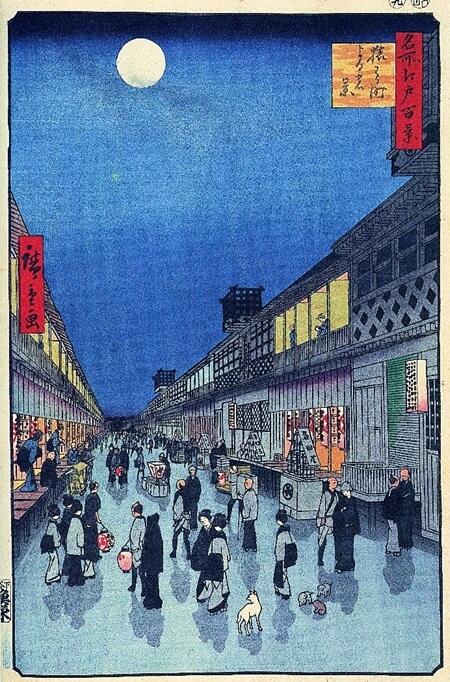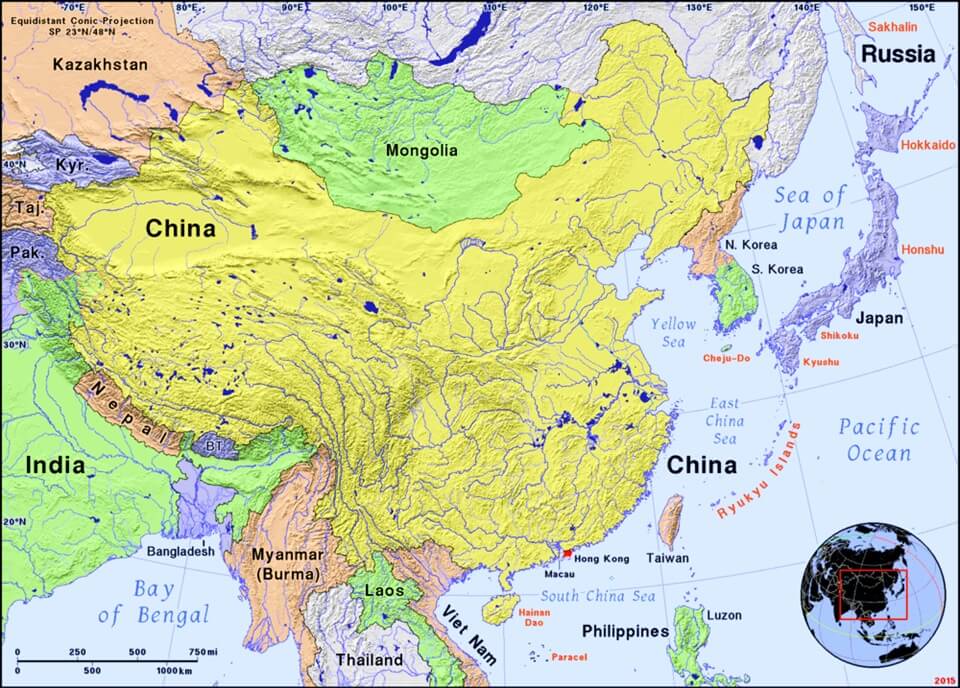Activity 1: Can You Find It?
Zoom in to find the following in the artwork:
- Lanterns
- Dog
- Puppies
- Teahouses
- Kabuki Theaters
- Moon
- Shadows
Activity 2: Narrate the Artwork
- After studying the artwork, narrate the scene shown aloud using your own words.
Activity 3: Map the Artwork
Zoom in to find the country of Japan.
Activity 4: Color the Map of Japan

- Click the crayon above and complete page 17 of 'Art History Coloring Pages for Second Grade.'
Activity 5: Color the Artwork

- Click the crayon above and complete page 18 of 'Third Grade Art History Coloring Book.'
Activity 6: Create Your Own Cityscape

- Click the crayon above and complete page 19 of 'Third Grade Art History Coloring Book.'
- Using crayons, color pencils, pastels, or paint, create your own cityscape.
- Beforehand, discuss whether you plan to create a bird's eye view, a panoramic view, a street-level view, or a window-level view.
- Think about the buildings, people, streets, and other features you wish to incorporate.
- You might decide to create a picture of a real city, an imaginary city, or a real city with imaginary embellishments.
 Genres of Paintings
Painting Genres
Genres of Paintings
Painting Genres


 Genres of Paintings
Painting Genres
Genres of Paintings
Painting Genres





